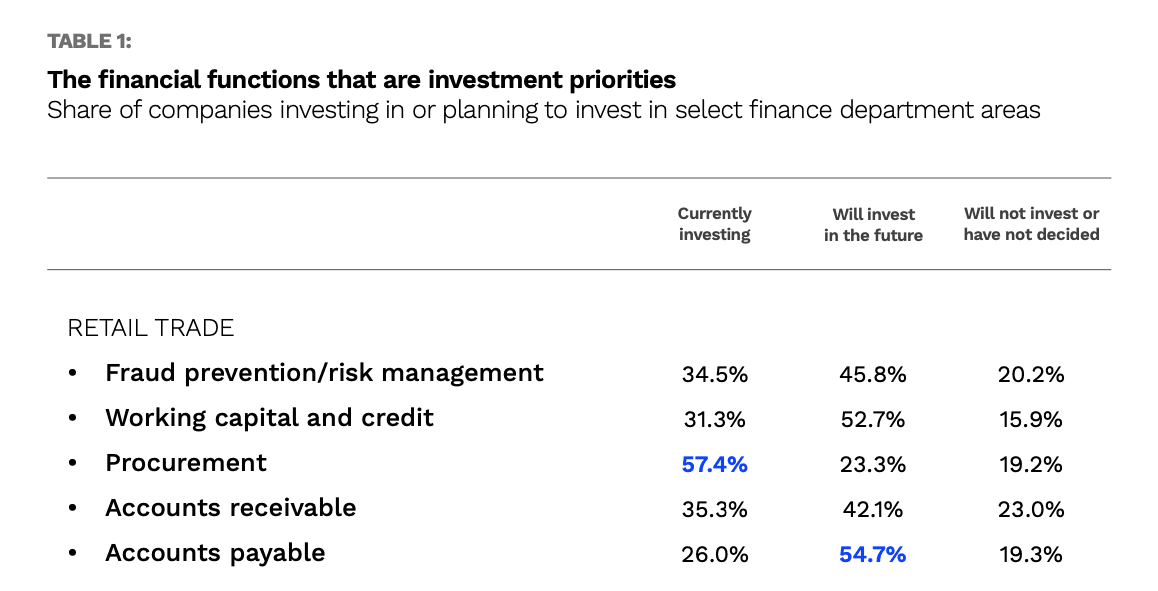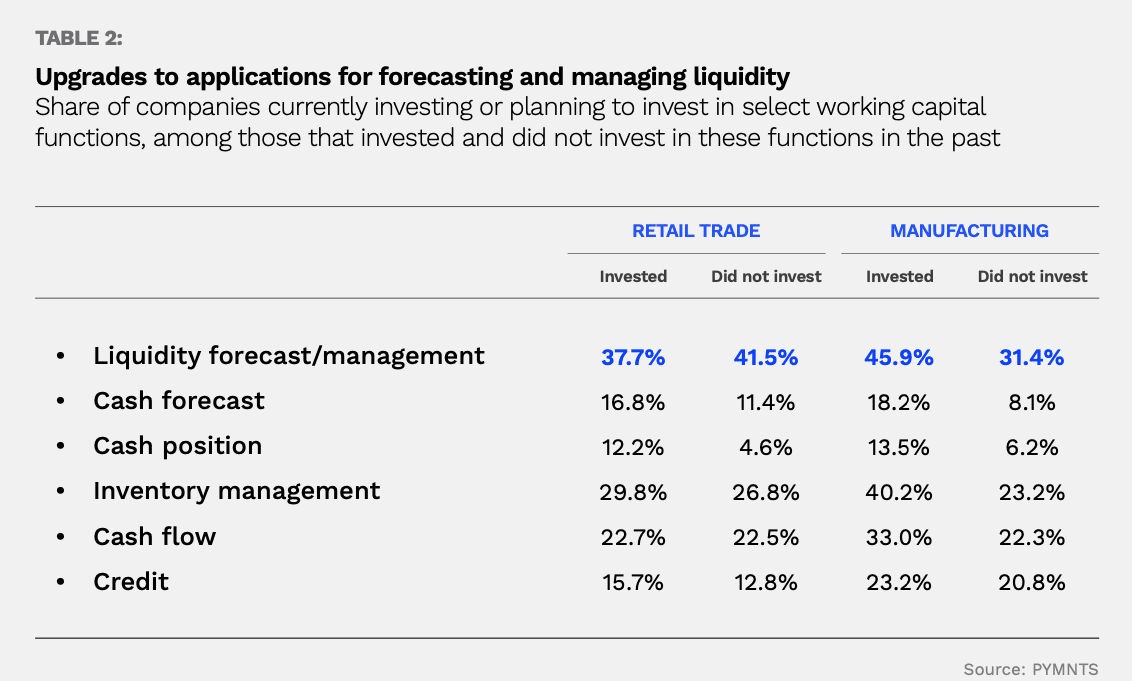Retailers Won’t Scrimp on Critical Investments in Payments Systems

Retailers learned hard lessons about modernizing payment processes during the pandemic, and more are now taking steps to upgrade systems to improve in specific areas.
The digital shift that went into high gear in 2020 and 2021 exposed weaknesses in key operational areas, particularly cash conversion practices and inventory management. New research shows a growing awareness of gaps and a more aggressive approach to fixing them.
In the new study “Payment Technology’s Future: Retailers, Manufacturers Seek Better Workflows,” a PYMNTS and Corcentric collaboration based on surveys of 250 retail and manufacturing CFOs, found that nearly 6 in 10 (57%) of retailers are now spending on improvements to procurement systems, for example, while also focusing attention on accounts payable (AP), accounts receivable (AR) processes.
As the study states, “The pandemic has shown that business disruptions can happen without warning and come from any direction. For that reason, all business processes, particularly financial operations or payments functions, must be well-funded with current technology and well-managed.”

Retailer issues with the cash conversion cycle now revolve around days payables outstanding (DPO), days sales outstanding (DSO) and days inventory outstanding (DIO). System upgrades are seen as having a dramatic impact in these areas. That’s doubly so after 2022 saw swollen inventories lead to deep discounting that hurt the bottom line.
Payments Strategy Optimization for 2023
The primary objective of this investment is maintaining stronger cash positions, leading 38% of retailers to spend on liquidity forecasting and management applications, and 42% of those that have not yet done so now planning to bring systems to bear in this area.
In a recent interview with PYMNTS’ Karen Webster, Corcentric President and COO Matt Clark said learnings from 2022 particularly have caused more CFOs to “step back and look at this whole life cycle from an end-to-end perspective and see if there’s a way to address it on a more holistic basis, versus a kind of point solution incremental basis that the market has been conditioned into.”
Clark added that CFOs must answer salient questions about current practices, saying “are you optimized in terms of timing your payment strategy, in terms of when you’re paying your suppliers, and then are you optimized in terms of how you’re getting paid by your customers?”
See also: CFOs Zero In on Optimizing the Cash Conversion Cycle
With the unknowns of 2023 weighing on retailers, it’s understandable that a focus on cash conversion and liquidity would become a priority, and that’s what the new data shows.
Payment Technology’s Future: Retailers, Manufacturers Seek Better Workflows spotlights a keen interest in inventory management as a central pillar of system improvements, finding 30% of retailers that have previously invested in this function are going deeper.

The study notes that “many retailers are focused on upgrades to their AP systems, and those that have not yet invested in their AP systems are now making up for lost time,” as half of those surveyed (49%) are “investing or planning to invest in their enterprise resource planning (ERP) applications, while 39% are making investments in their invoice approval applications.”
Read the study: Payment Technology’s Future: Retailers, Manufacturers Seek Better Workflows
